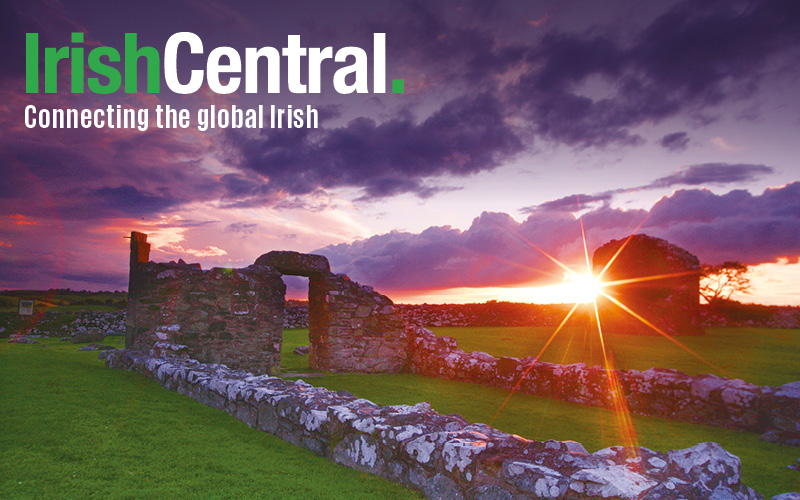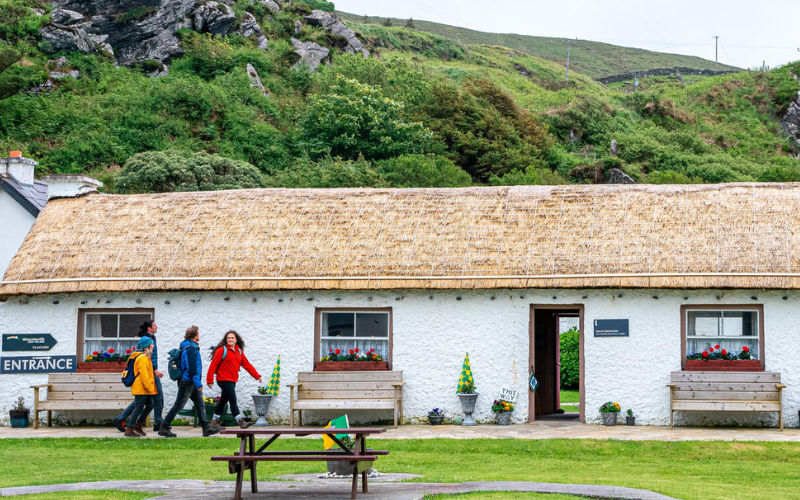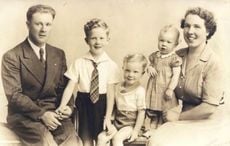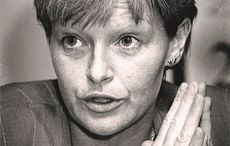|
An incredible evening to still the soul and warm the eyeballs. I'm sitting on the harbor wall in Mountshannon, the great river whispering secrets to the clustered boats at their moorings, and both the sun and the moon are suspended in the heavens above.
The sun is a huge golden ball close to the horizon, reluctant to go asleep after a mighty day, and the young moon is a silver sliver, bursting with life, riding high over a luminous sky.
There are gulls and coots calling from the waters stretching into the faraway, mooring lights are bobbing from the yachts and cruisers that could not find space at the crowded Pier, and there is a human buzz and vibrancy growing behind me in Mountshannon itself. An arts festival has just been launched, and they are always special around here.
This is the kind of place where one does not want to hear or see the news bulletins from home and abroad. This is a place of great gentle beauty far divorced from bulletins which largely deal in these times with the detail of man's incredible inhumanity to man, with social and economic stresses and strains, with tragedies and troubles.
Maybe it is one of the drawbacks of modernity that it is so hard to escape. If there is an earthquake in any corner of the world, a new war, an erupting volcano, another Syrian atrocity, another kink in the American election campaign, it is crackling on the airwaves inside minutes; flickering on the TV screens just a little later.
Not for me on a night like this in a place like this. Give me birdsong and lapping waters and the moon and the sun co-existing serenely in the wonderland of space.
Actually, as the sounds of a developing jazz session in some pub in town come drifting down, the thought occurs to me that some of you might be interested in the matter of ethnic integration in rural areas of modern Ireland.
This Dergside region around the capital heritage town of Killaloe down the road was once the heartland of the Celtic monoculture which lasted so strongly down so many centuries since the time of the great King Brian Boru. This was his territory.
Now this entire region, without any effort or disruption at all, has become multicultural in a fashion which has enriched and invigorated the entire social fabric.
Five minutes ago I had a casual pierside chat with a man called Slattery from Limerick. He was raving about the quality of a pub session in Killaloe the previous night.
The range of the music and song in the small pub was as wide as that of the audience. There were Americans and Germans and Japanese, Greeks and Germans, English and Dutch.
If some of the music was traditional then much of it also came from these and other cultures as the merriment lasted into the small hours.
Killaloe is a cosmopolitan town by Irish standards nowadays. It has always had a vibrant British community, totally integrated into the social and business life, largely, I think, attracted there by the boating and angling attractions on the first place.
Now about every European nation is also represented by the folk in business and the services. And the Orient is well represented too in a way that adds spice and new life to what was once Brian Boru's sole territory. There is a buzz which is quite unique through the entire region.
Behind Mountshannon, back towards Ennis, there is a hamlet with an enchanting name called Ogonnelloe. It was just another hamlet for generations.
About 25 years ago, however, in a development which I cannot explain, Ogonnelloe began to attract a colony of imaginative creative folk from Europe and beyond. Soon they were hundreds strong.
Many of them, I think, were young people who wanted to drop out of the rat races in the huge European cities where they were raised and make a new life for themselves and their families in green and peaceful Ireland.
They brought a new injection of artistry, creativity, boldness, imagination and life into an ageing and conservative monoculture. They brought skills like sculpture and weaving and pottery and self-sufficient lifestyles with them.
In time they generated a wide range of crafts and services to East Clare. It is a different area now in a good and healthy way.
There is, for example, a Steiner school there at Raheen, attracting both local children and those of the New Irish. When we needed thatchers for Maisie's Cottage a decade ago it was from that community they came.
They were beautiful and honorable people. And they were great craic.
Clare has benefited hugely from the incoming settlers. The Burren and the West have similar colonies of New Irish, totally and gently integrated in a process nobody noticed was happening for the most part.
Today nobody from anywhere in the world, regardless of class, creed, or color, will feel a stranger for too long. That is the rural reality, I believe, for about all of rural Ireland, and perhaps it is not sufficiently documented.
The sun eventually disappears. The sliver of moon rules supreme.
The jazz session behind me sounds so seductively compelling that I am going to leave ye now.




Comments